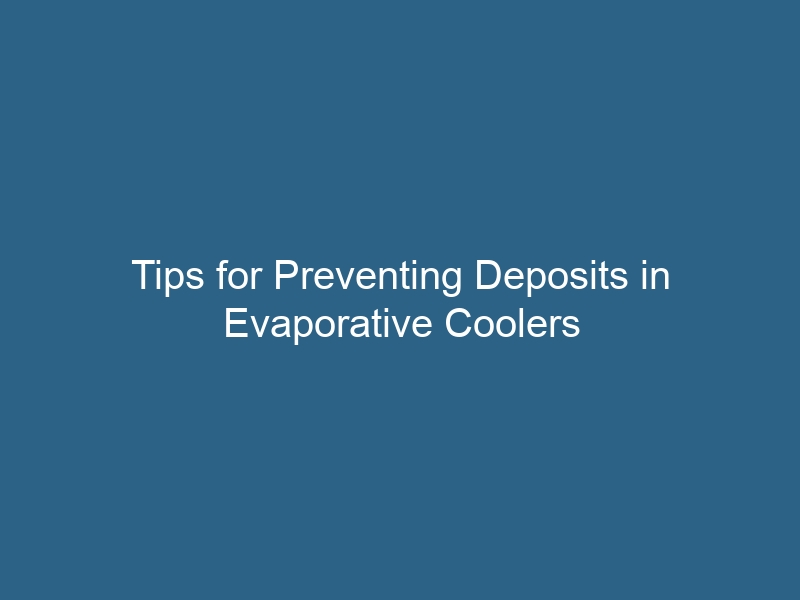Quck answer
Evaporative coolers are prone to the buildup of deposits, which can affect their efficiency and performance. To prevent deposits in evaporative coolers, follow these steps:
1. Regular cleaning: Clean the cooler regularly to remove any dirt, debris, or mineral deposits. Use a soft brush or vacuum to clean the cooling pads and the interior of the cooler.
2. Water treatment: Use water treatment additives or tablets to prevent the buildup of mineral deposits. These additives can help reduce the mineral content in the water and prevent scaling.
3. Proper water source: Use clean and filtered water for the evaporative cooler. Hard water with high mineral content can lead to deposits. If possible, connect the cooler to a water softening system.
4. Regular maintenance: Check the cooler’s components, such as the pump and fan, regularly. Replace any damaged or worn-out parts to prevent problems that can lead to deposits.
By following these preventive measures, you can keep your evaporative cooler free from deposits and ensure its efficient cooling performance.
Evaporative coolers, also known as swamp coolers, are a great way to stay cool in hot summer months. However, in areas with mineral-rich water, the evaporative process can leave behind deposits of calcium and alkaline on the cooler pads and interior. These deposits can cause corrosion and reduce the lifespan of the cooler. By taking preventative measures, you can minimize the buildup of calcium and other deposits, improving the performance and longevity of your evaporative cooler.
Perform Early-Season Maintenance
Start each cooling season by thoroughly cleaning your evaporative cooler. Remove the cooler panels and scrub them with a solution of 1 cup white vinegar to 1 gallon of water. Pay close attention to cleaning the panel vanes and avoid using water from a water softener, as it can lead to scale buildup.
Choose Quality Cooler Pads
The type of cooler pads you use can make a difference in preventing buildup. Opt for Aspen cooler pads, as they efficiently conduct water and improve the cooling effect. Replace the pads as needed throughout the season, and consider replacing them more frequently if your water has high mineral content.
Maintain Regular Cleaning
You don’t need a specialized cleaner to keep your evaporative cooler clean and mold-free. A mixture of white vinegar and water is an effective cleaning solution. Clean the water pan reservoir in the bottom of the cooler monthly, scrubbing it with the vinegar and water solution. Additionally, wash the filter and water curtains every two weeks using mild detergent and lukewarm water.
Install a Bleed-Off Valve
An alternative option is to install a bleed-off valve on the water line that carries water from the reservoir to the Aspen filters. This valve diverts a percentage of the recycled water to an appropriate area of your lawn or garden that can handle the mineral-rich water. Bleed-off valves can be purchased at home improvement stores and should be installed 6 inches up from the pump connection.
Turn It Off
When the season comes to an end, it is important to perform some additional maintenance on your swamp cooler to ensure softer water and reduce deposits. Start by draining the unit after you are finished using it for the season. Additionally, give it a final cleaning to eliminate any debris or buildup. If your evaporative cooler has a fan-only mode, run it for approximately one hour after emptying and cleaning the unit to ensure thorough drying.
During the winter months, cover your evaporative cooler with a canvas cover. This cover will safeguard the unit and prevent cold drafts from entering your house. Remember to turn off the cooler using the switch inside the house and the switch located at the top of the unit, on the underside of the top cover.
Maintaining your swamp cooler regularly will help minimize the accumulation of minerals that can hinder the efficiency of your unit. The time you invest in maintenance will ultimately extend the lifespan of your swamp cooler.


